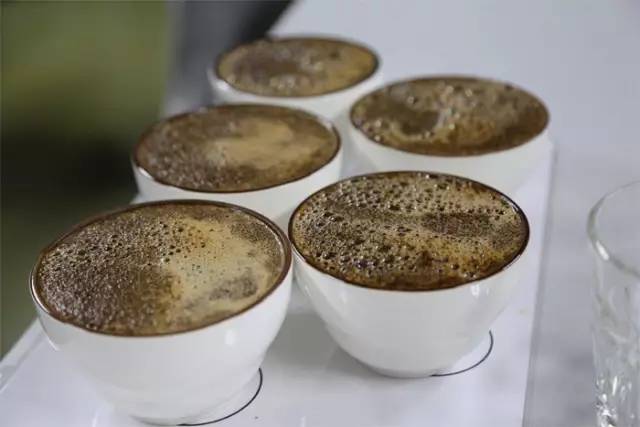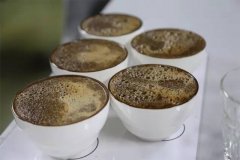History of Panama
Coffee History of Panama
Coffee was introduced into Panama in 1780, when Europeans introduced the first Typica tree species. From then on, the history of Panamanian coffee began. For Panamanians at that time, such drinks were both novel and mysterious, which not only quickly conquered people's senses, but also led to the widespread planting of coffee trees by local people. Riding on the third wave of coffee aesthetic trend, after gradually learning to taste single beans, the so-called manor boutique coffee also began to become a trend.
After that, this mysterious and strange drink conquered the senses of Panamanians, and the local people began to grow it widely. Panamanian coffee is very smooth, full granule light weight, and perfect acidity balance, its high-quality coffee bean flavor is pure, very characteristic, it is recommended to adopt moderate roasting. Many buyers like to use Panamanian beans as comprehensive products, and almost all high-quality coffee beans are shipped to France and Finland.
Note 1:Typica is the oldest native species of coffee in Ethiopia, with low disease resistance and economic benefits.]
Panama is the southernmost country in Central America, bordering the Caribbean Sea to the east, the Pacific Ocean to the west, Costa Rica to the north and Colombia to the south-it is an important isthmus connecting North and South America. Under the influence of such geographical factors, Panama has a complex and changeable microclimate, which also creates a unique flavor of Panamanian coffee. Panama is roughly divided into four producing areas:
The producing area of Bogut is 1450 meters above sea level.
The coffee produced in this area is the region with the highest coffee production and the best quality in Panama.
The volcanic producing area is 2000-3000 meters above sea level.
The coffee in this producing area is characterized by a mild and balanced flavor, which has gradually attracted the attention of international experts and coffee lovers.
The Santa Clara producing area is 1500 meters above sea level
Due to the irrigation of Chorerra Falls and the adjacent Panama Canal, coffee from all over Panama can be easily transported to all parts of the world.
Kendra producing area is 1200 meters above sea level
This producing area is the most promising and has the potential to develop high-quality premium coffee.
Producing area
Special features
Bokui Special Zone
The multi-quality coffee produced in this area is the region with the highest coffee production and the best quality in Panama.
Volcanic area
The coffee produced there is characterized by a mild and balanced taste, which has gradually attracted the attention of international experts and coffee lovers, and it is believed that it will soon be on a par with the Boqui Special District.
Santa Clara District
The fertile coffee garden is watered by clear rivers brought by Chorerra Falls, and the nearby Panama Canal makes it easy for fresh and authentic Panamanian coffee to be transported to all parts of the world.
Kendra district
The most promising is the potential to develop high-quality premium coffee.
The most ─ of geisha in the world Central America? Panama
One of the most prominent highlights in the history of coffee in Panama is ─ Geisha (Geisha, also translated as Rose Summer).
Once the windbreak tree species of the coffee farm, it has become the new darling of the world, winning it as early as 2004.
After the champion of the SCAA American boutique coffee association competition, the Geisha coffee bean with unique flower and fruit flavor won the title of Panamanian national treasure. It is not only the focus of the annual "Best Panamanian auction" (Best of Panama Auction), but also the most popular variety whose price has soared fastest in recent years. In 2013, the champion of the Geisha group broke the world record in a global online bid. Marked at a sky-high price of $350.25 per pound, it is as popular as expected.
The distinctive features of Geisha are more intoxicating than the typical flavor of other Panamanian coffee. Under the expectations of the public, it also has a particularly high risk, high mortality, low yield, not easy pruning, but also requires complex and high-cost treatment in order to maintain its most primitive flavor. In the baking degree of Geisha, most people will choose shallow roasting, only remove the grass smell of coffee beans, shorten the baking time, in order to retain the bright sour taste of Geisha. In the Bean Hunter, the author ─ Xu Baolin describes that "if you don't know roses and summer beans all your life, you can call it a glutton in vain." this shows its undisputed position in the coffee circle.
The road to boutique coffee belonging to Panama
As the torrent of time comes to modern times, people begin to know how to define and understand the different flavors on the taste buds on the tip of the tongue-understanding the beauty of the original taste, the flavor characteristics created by the microclimate, the depth of baking, and so on. at the same time, there are also more manors with professional knowledge and technology. For Panama, the various changes brought about by the impact of the boutique Kuroshio are all an important process of bringing Panamanian coffee into line with the world step by step.
With the establishment and development of the Panamanian Fine Coffee Association, many manors and producing areas, which are already too small, have become high-quality coffee producing countries specializing in the boutique market. Under the influence of the annual auction of "Best Panama", Panama has become the spokesman of boutique coffee and the most geisha!

Important Notice :
前街咖啡 FrontStreet Coffee has moved to new addredd:
FrontStreet Coffee Address: 315,Donghua East Road,GuangZhou
Tel:020 38364473
- Prev

What is 90+ beans its flavor taste
Just as Dove can only be called chocolate-flavored candy, instant coffee can only be called coffee-flavored soft drink. 90+ coffee beans are the symbol of the best honor in the coffee world. 90+ doesn't mean all coffees rated above 90, it means a top coffee line of 13 flavors. Sometimes they appear on different estates, and they have a variety of taste characteristics.
- Next

One of the factors affecting coffee how does water quality affect coffee extraction?
For more boutique coffee beans, please add private Wechat Qianjie, WeChat: (long press to copy) qiannjie 01 | Preface We know that the main factors affecting coffee are place of production, roasting, grinding, water temperature, proportion, brewing method, freshness, and water quality. No matter what kind of factors, it is necessary to study the influence of various factors on coffee flavor from a scientific point of view.
Related
- Beginners will see the "Coffee pull flower" guide!
- What is the difference between ice blog purified milk and ordinary milk coffee?
- Why is the Philippines the largest producer of crops in Liberia?
- For coffee extraction, should the fine powder be retained?
- How does extracted espresso fill pressed powder? How much strength does it take to press the powder?
- How to make jasmine cold extract coffee? Is the jasmine + latte good?
- Will this little toy really make the coffee taste better? How does Lily Drip affect coffee extraction?
- Will the action of slapping the filter cup also affect coffee extraction?
- What's the difference between powder-to-water ratio and powder-to-liquid ratio?
- What is the Ethiopian local species? What does it have to do with Heirloom native species?

